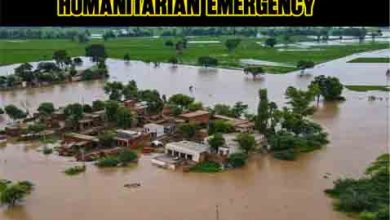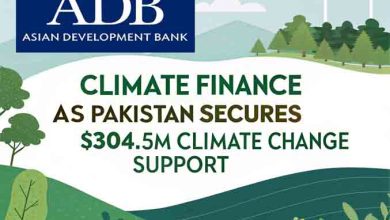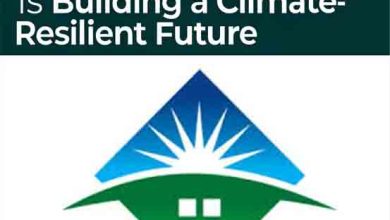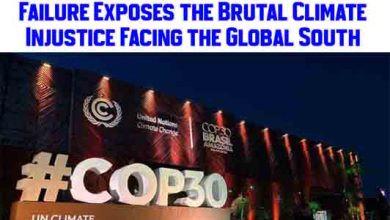Devastating Inequity: Environmental Justice Crisis in Pakistan Uncovered
Environmental justice in Pakistan remains a growing crisis due to climate change, water scarcity, and pollution. Discover the root causes and the fight for a fairer, greener future.
Environmental Justice refers to the fair treatment and meaningful involvement of all people—regardless of race, ethnicity, income, or location—in the formulation and enforcement of environmental policies. This principle ensures that no group of people, especially marginalized or low-income communities, bears a disproportionate burden of environmental hazards.
In Pakistan, environmental justice is an urgent and complex issue. With rising pollution, climate-induced disasters, and lack of access to resources, the poor and vulnerable are hit hardest. The path to a sustainable and just future demands targeted, inclusive interventions.
Climate Change: A Deadly Threat to the Vulnerable
Pakistan contributes less than 1% to global greenhouse gas emissions (World Bank, 2021), yet faces some of the most severe impacts of climate change. From devastating floods to crippling heatwaves, the country has become a ground zero for climate injustice.
The 2022 floods displaced over 33 million people, with provinces like Sindh and Balochistan suffering the worst. Rural populations lost homes, crops, and livelihoods—widening the gap between the privileged and the poor.
Climate change also threatens food security. Irregular rainfall and rising temperatures have reduced crop yields. Small-scale farmers, who rely on rain-fed agriculture, often find themselves trapped in poverty.
“The intersection of climate change and poverty creates a cycle of deprivation that is difficult to break without targeted interventions,” notes a climate researcher from Islamabad.
This highlights the need for climate resilience policies that center on vulnerable populations, especially in agriculture-dependent rural zones.
Water Scarcity: A Crisis of Inequality
Pakistan is among the most water-stressed nations globally. Per capita water availability has dropped from 5,260 cubic meters in 1951 to just 1,000 cubic meters in 2021 (PCRWR, 2021). The causes include poor management, outdated irrigation infrastructure, and over-extraction of groundwater.
Who Suffers the Most?
While urban elites often enjoy consistent water supply, rural and low-income communities rely on contaminated sources like open wells and polluted rivers. The result? Widespread waterborne diseases such as diarrhea and cholera, especially among children (UNICEF, 2020).
The unequal access to clean water is a clear case of environmental injustice. Water policies and infrastructure development must address not only scarcity but also distributional equity.
Industrial Pollution and Environmental Injustice
Pakistan’s industrial sector, including textiles, tanneries, and cement factories, contributes significantly to air and water pollution. One of the most tragic examples is the Ravi River, polluted by untreated industrial waste, which endangers communities relying on it for drinking and agriculture.
Living in Pollution’s Shadow
Poor families often reside near industrial zones, breathing toxic air and drinking contaminated water. Lacking political clout and legal aid, they are unable to demand accountability. This overlap of economic marginalization and environmental degradation exemplifies environmental injustice.
Despite existing environmental protection laws, enforcement remains weak due to corruption and lack of institutional capacity. Without robust regulatory mechanisms, polluters continue to act with impunity.
Progress and Efforts Towards Environmental Justice
Pakistan has made some progress in addressing environmental justice. Key initiatives include:
Ten Billion Tree Tsunami Programme
Launched in 2019, this flagship program aims to restore ecosystems, combat deforestation, and generate green jobs for vulnerable communities. Over 2 billion trees have been planted so far.
UNDP’s Climate Resilience Projects
The United Nations Development Programme (UNDP) has supported projects in Khyber Pakhtunkhwa and Gilgit-Baltistan, helping vulnerable populations prepare for climate shocks.
Civil Society and NGOs
Local organizations such as Pakistan Youth Climate Network (PYCN) and Hisaar Foundation have been instrumental in raising awareness, lobbying for policy change, and empowering marginalized groups.
Despite these efforts, challenges persist. Projects are often short-term, underfunded, or not inclusive of the most affected populations.
Conclusion: The Urgent Need for Inclusive Solutions
The environmental justice crisis in Pakistan is real and growing. From climate disasters and water scarcity to pollution and displacement, the burden is falling unfairly on the poor, rural, and marginalized.
To turn the tide:
- Policymakers must adopt pro-poor environmental frameworks.
- Civil society must continue to amplify the voices of those affected.
- International donors must ensure funding is inclusive, transparent, and accountable.
- Educational institutions and media must raise awareness and encourage participation in decision-making processes.
Only by placing environmental justice at the heart of national planning can Pakistan build a fair, inclusive, and sustainable future.
Internal Links
- Pakistan’s Climate Vulnerability Report: A Wake-up Call
- Youth-Led Climate Action in Gilgit-Baltistan







